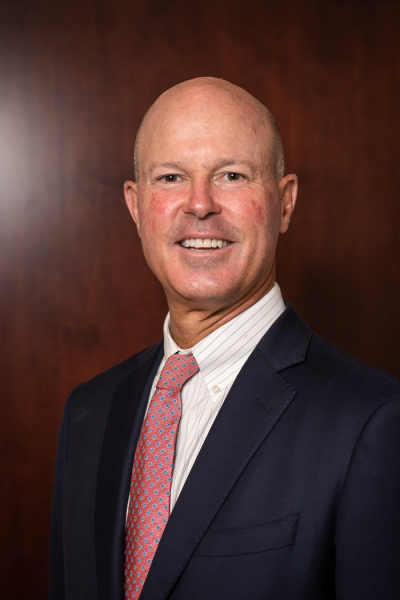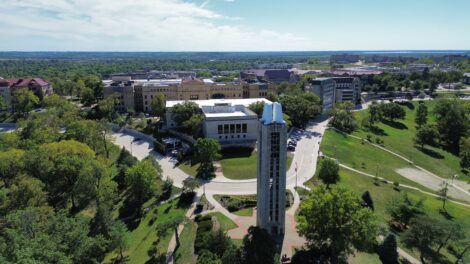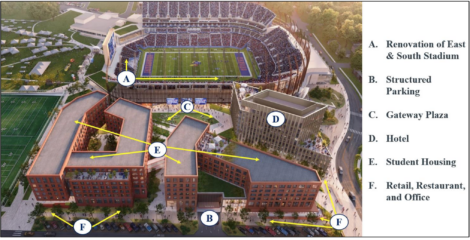‘It is going to be challenging’: KU, other universities told flat funding from the state may be best-case scenario
Regents told KU does expect another record high enrollment

photo by: University of Kansas
The skyline of the University of Kansas is pictured.
The students are coming. It is unclear whether the dollars will.
The University of Kansas expects its overall enrollment to set a new record when classes begin next month, Chancellor Douglas Girod said Tuesday at a summer retreat for the Kansas Board of Regents.
But the ritual of starting a new school year wasn’t the one most on the minds of higher education leaders gathered for the three-day retreat at Kansas State University.
The ritual that was: Kansas elections.
When legislators convene early next year, it officially will be election season, and university CEOs were warned they had better be prepared to deal with legislators who are intent on holding the line or cutting state spending.
“This may be a year where maintaining what we got last year would be a huge success,” said Regent John Dicus, who chairs the group’s finance committee. “It is going to be challenging.”

photo by: Kansas Board of Regents
Regent John Dicus
But Regents also were told it will be useful to look beyond Kansas’ borders when figuring out what to ask of state lawmakers. Many states, especially in the central U.S., are becoming much more aggressive in the financial aid they are willing to give university students. Those states are recognizing the higher education system is critical to stocking their states with an educated workforce, which will lead to their states being home to more jobs in the future.
Numbers presented to the Regents on Tuesday show the state already is behind on that effort. In fiscal year 2023, Kansas was spending for student financial aid about $307 in state funds for each full-time undergraduate college student. That is about three times the amount the state was spending just a few years ago, but Kansas is still last in the region — by a wide margin.
Texas is tops in the region at $1,104 per undergraduate student. Others include: Arkansas, $929; Colorado, $842; Missouri, $743; Iowa, $673, and Nebraska $490.
“It is telling the investments others states are making in higher education,” Girod told the Regents. “They are dramatically investing right now, which is making it a real challenge for us.”

photo by: Chad Lawhorn/Journal-World
University of Kansas Chancellor Douglas Girod speaks at the FBI and KU Cybersecurity Conference on April 4, 2025.
KU leaders do expect freshman enrollment to be down some from last year’s all-time high, Girod said. However, overall enrollment for the university is expected to be above last year’s total because the incoming freshman class is still expected to be larger than the senior class that just graduated.
Area states are ramping up their competition for students as the impacts of a long-discussed “demographic cliff” are about to hit hardest. Next year will mark 18 years after the Great Recession of 2008, which produced a drop in birthrates. Even after the economic pressures of the Great Recession receded, birthrates remained low for years. The result is that graduating high school classes are expected to be smaller than normal through at least the mid-2030s.
At their retreat on Tuesday, higher education leaders discussed multiple strategies for working with legislators to convince them that, despite the increased funding the Legislature has provided in recent years, there’s still a lot more funding needed to catch up.
A slowdown in state funding would come at a particularly bad time for the state’s largest research universities, like KU, because there already have been cutbacks in federal research funding, and there are worries those cutbacks will become larger.
Girod, who is engaged nationally on the issue as the vice chair of the Association of American Universities, said the much-discussed cuts that would reduce the percentage of federal grant funds that can be used to pay for university overhead — like utilities for laboratory space and administrators who oversee the grants — have largely been put on hold by the courts. Temporary restraining orders have prevented those new rules from being implemented.
But the lawsuits haven’t prevented some agencies from simply deciding not to issue new grants.
“What we have seen, with the NIH (National Institutes of Health) in particular, agencies have stopped issuing new grants,” Girod said.
Additionally, Girod estimated that KU has had $15 million to $20 million worth of grants “clawed back” due to executive orders or other federal changes. Girod said he remains hopeful some of that grant funding eventually will be returned to KU.
KU hasn’t been the hardest hit on that front, however. Kansas State President Richard Linton told the Regents that this year the university has lost $96 million in federal grants. Unlike KU, Kansas State had several grant programs that were tied to the U.S. Agency for International Development — USAID — that became a major target of the Trump administration’s cost cutting efforts.
Regents were told that Wichita State University was the least impacted among the state’s large research institutions. That’s partly because Wichita State receives a large amount of its grants from the U.S. Defense Department, which hasn’t been cut at the federal level. Additionally, Wichita State is one of the nation’s leaders in receiving research funds from private industry, particularly the aviation industry. Unlike government funds, the private research funds remained steady or grew.
For that very reason, Linton told Regents that Kansas State was looking to create a much stronger research pipeline with private industry in the near future.
At the retreat, which will continue on Wednesday at Kansas State University, the Regents began the early work of looking at budget requests from each individual university.
KU listed funding for two new research centers that it hopes to create. As the Journal-World reported in June, KU is exploring the idea of creating the Kansas Center for Energy Production. That center could research and help coordinate efforts to tap new energy sources in the state — the idea of green hydrogen in western Kansas has been mentioned — but also would help further develop traditional energy sources. KU is seeking an annual $10 million appropriation from the state to help establish that center.
Also on KU’s list is a $10 million annual ask for the creation of the High Performance Computing Center. That new center would aim to create computing infrastructure needed to better research and utilize artificial intelligence. Girod said state institutions in Kansas are lacking that type of computer horsepower, and that the KU center could serve as a resource to all state government and its AI needs.
KU’s top-ranked funding request for the Legislature isn’t tied to the new centers, but rather to existing employees. KU is seeking $10.5 million to provide a 2.5% pay increase to existing employees. The university also is seeking $5.5 million in additional personnel funding that would be used to give pay adjustments over and above the 2.5% mark. KU, like most of the universities in the state, contends it has many employees making well below what similar positions would earn on the private market or other comparable universities.
The Regents took no action on any of the budget items, and instead said they wanted to think carefully about the budget request they submit to legislators this fall.
“We need to be very reasonable in what we ask of the Legislature, or we risk having additional cuts that we don’t need,” Dicus said. “It will be a challenging thing.”






